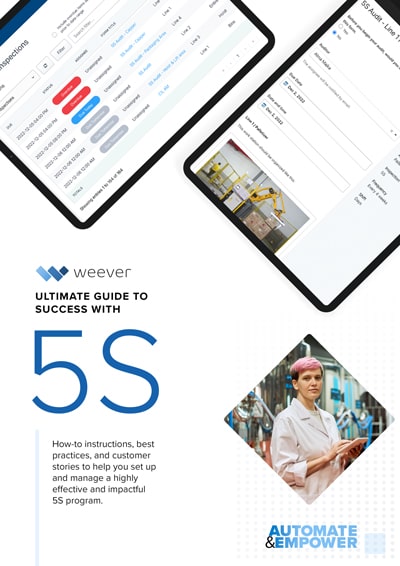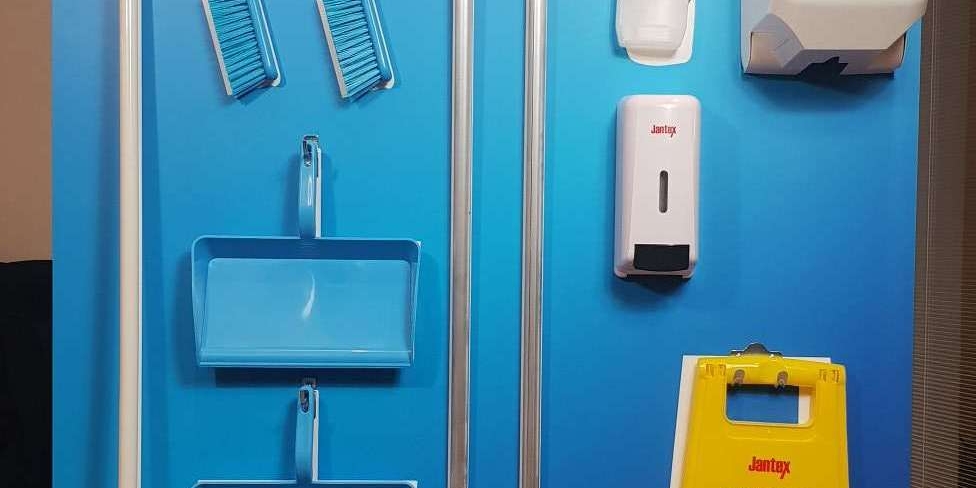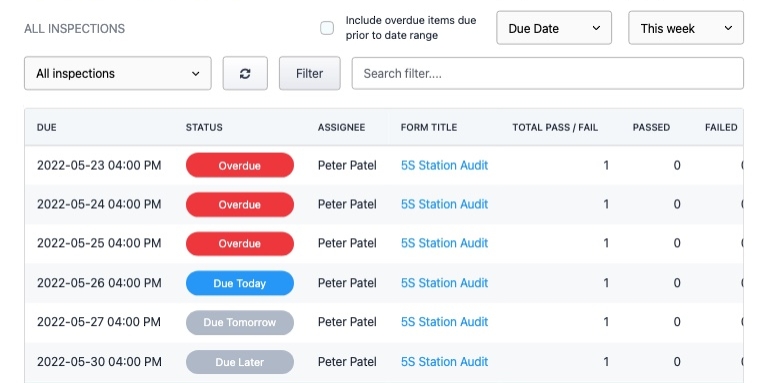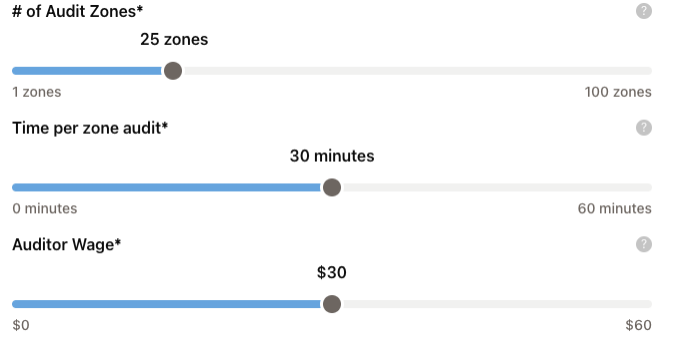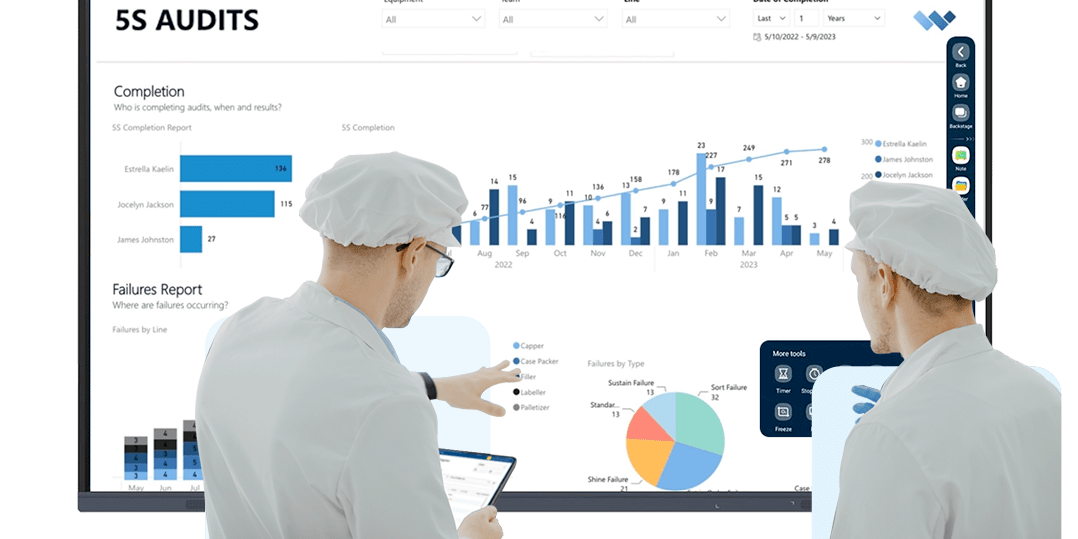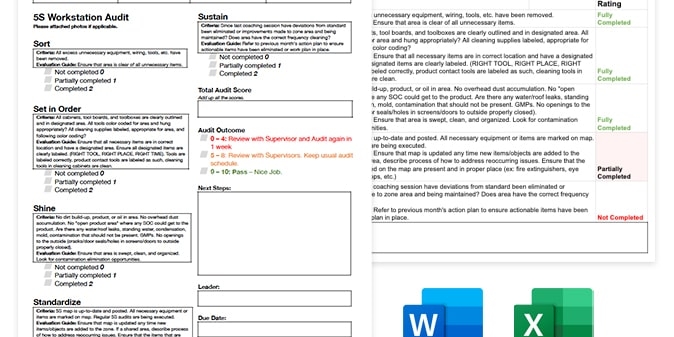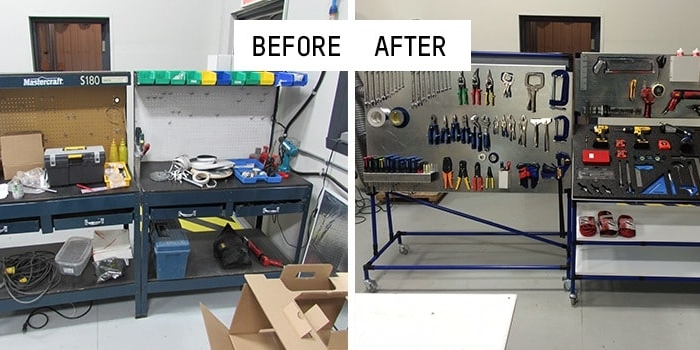Pain Points Solved with 5S
What bottomline organizational strategic priorities does 5S address?

5S Overview
5S Planning
5S Implementation
5S Auditing
5S Audit Digitization
FREE RESOURCEs
In the competitive landscape of manufacturing, the quest for enhanced productivity, improved safety, streamlined operations, and cost-effectiveness is a strategic priority for organizations.
However, achieving these goals often encounters hurdles such as inefficient workflows, safety concerns, high employee turnover, lean waste, product defects, and escalating operational costs.
The 5S methodology is a proven strategy that addresses these pain points by systematically optimizing workspaces and fostering a culture of continuous improvement. Here are the top ways a successful 5S implementation can help to overcome pain points and align with your organization's strategic objectives.
Productivity & Efficiency
Increase productivity and efficiency so we can reduce costs and increase production.
Inefficient workspaces and processes can hamper productivity. Implementing 5S improves workflows, reduces bottlenecks, and streamlines operations, enhancing overall productivity. Fundamentally, 5S is about optimizing the efficiency of workstations to maximize productivity and employee engagement.
- "Sort" minimizes clutter and reduces time spent searching for tools, materials, etc.
- "Set in Order" ensures everything has a designated place, which leads to fewer errors and smoother operations, underpinning enhanced quality and reduced rework.
- "Shine" emphasizes regular cleaning and maintenance, thus reducing interruptions caused by accidents or unsafe conditions.
- "Standardize" implements consistent procedures and simplifies training, fosters clarity, and significantly contributes to streamlined workflows.
- "Sustain" nurtures a culture of continuous improvement leading to lasting efficiency gains and reduced waste.
Poor Safety Record
Reduce incidents and near misses that have resulted in massive costs, regulatory issues and issues with employee retention.
Implementing the 5S methodology significantly bolsters safety measures within manufacturing facilities. A clean and organized workspace reduces the risk of accidents and injuries by removing hazards and making potential dangers more visible. You can also limit travel through areas that contain hazardous chemicals, thus reducing exposure.
- Organizing tools, equipment, and materials in designated and easily accessible locations.
- Clear labeling and structured storage systems reduce the time spent searching for items, preventing rushed movements or reaching for tools in unsafe positions.
- Ensures that potentially hazardous materials are stored separately and clearly marked, minimizing the risk of exposure or mishandling.
- Established and consistent placements for items reduce the likelihood of incidents caused by incorrect tool usage or improper storage, contributing to a safer work environment.
Employee Retention
Reduce employee turnover which results in increased hiring costs, training, etc.
Employee retention is a challenge for manufacturers. As a result, they are constantly looking for ways to keep good employees through engagement programs. 5S can help with this.
Implementing the 5S methodology fosters a culture that actively engages employees in the improvement process.
A well-organized and clean environment fosters a positive work culture, boosts employee morale, and encourages ownership and pride in the workplace. By engaging and empowering your staff to be actively involved in 5S you give them a sense of ownership, increasing job satisfaction and reducing absenteeism.
Moreover, 5S encourages collaboration and teamwork. As employees organize work areas, establish cleaning schedules, and create standardized processes, they work together to develop and maintain these standards. This collaborative effort cultivates a sense of unity and shared responsibility for the workplace, fostering a culture where employees feel valued and integral to the success of the organization.
Reduced Lean "Waste"
Reduce all types of lean waste to increase productivity, including defects, excess processing, over production, waiting, inventory and so on.
5S helps identify and eliminate different types of waste, including unnecessary movement, overproduction, excess inventory, waiting time, defects, and underutilized talent or resources.
- Reducing inventory and the potential for overproduction
- Minimizes excessive motion and transportation waste by optimizing workspaces,
- Ensuring tools and materials are easily accessible, reducing unnecessary movement
- Clear layouts and designated storage spaces diminish the waste of waiting by ensuring tools are readily available.
- Streamlining work processes between workstations can reduce worker downtime waiting for parts or instructions, unnecessary transportation of parts and materials, or under-utilized floorspace.
- Visual controls reduces defects and rework
Reduce Product Defects
Reduce costs relating to product quality issues including customer complaints and rework.
Disorder and lack of standardization can contribute to errors, defects, and inconsistencies in products or services. Implementing the 5S methodology significantly contributes to elevating product quality within a manufacturing facility. With standardized procedures and organized workspaces, the likelihood of errors decreases, leading to improved quality control and consistency in output.
- Ensure that only necessary items remain in the workspace, minimizing clutter and reducing the chances of errors caused by misplaced tools or materials.
- Decluttering process mitigate the risk of defects or inconsistencies in the manufacturing process, setting the stage for improved product quality.
- Organizing workspaces in a manner that facilitates efficient operations.
- Clear labeling and designated locations for tools and materials minimize the potential for errors during production.
- Quicker identification and retrieval of required items, reducing assembly errors or delays due to missing parts.
- Reinforce cleanliness, standardization, and ongoing adherence to best practices
- Promote consistency and reliability in manufacturing processes
Cost Savings
Reduce time and costs spent on inefficient processes lead to increased operational costs.
5S aids in identifying and eliminating wasteful practices, reducing costs in the long run. Implementing the 5S methodology leads to substantial cost reductions and enhanced cost-saving measures within manufacturing organizations.
- Eliminates unnecessary items, optimizing inventory and reducing excess stock
- Directly cuts costs associated with storing, managing, and procuring surplus materials
- Reduce spending on replacements and repairs, contributing to significant cost savings
- Minimizing search times, and prevent misplaced items
- Reduce downtime caused by employees searching for tools or materials
- Reduce unexpected breakdowns and repair costs
Continue Learning about 5S

bandjlogo

Bell-logo-New

Canadian-Tire-Logo

Diageo-customer-logo

greyston-bakery-logo

hello-fresh-customer

marks-customer-logo

CSL_Limited_logo

monin-logo

Winland Food

Mars-logo-main

rise-baking-customer-logo

Rockwool-Customer-Logo-min

Sportcheck-customer-logo

unilever-customer-logo

walmart-logo-small

husqvarna-customer-logo

Ajinomoto_logo

Peet's_Coffee_logo

Royal-Canin-Logo

